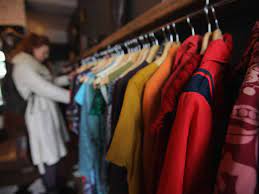The End Consumer

Few are talking about the end consumer as one of the most extensive problems in the supply chain clusterfuck.
I will be the first to acknowledge that retail therapy is sometimes what the doctor ordered. I like to wear what is in fashion. I find myself buying less and better, but that was not my mindset years ago.
Every season designers put out a new line with multiple pieces, and the majority of these lines are made in China, Vietnam, Cambodia, Myanmar, Bangladesh, and Pakistan. Through technology, what has happened is fast-casual goods giving companies the ability to make even more products. What hasn’t happened is calculating retail demand.
Brands have started to wake up to the importance of sustainability and the looming crisis of our planet. Over the past two decades, brands began to open their own retail stores. So not only were their products in department stores or small boutique stores, but they were also in their stores. Each of them chocked with merchandise. I walked through Bloomingdales last week, which was seriously painful, but the amount of inventory on the floors was mind-boggling. Knowing retail, there is no doubt that most of these goods will be marked down or sold to jobbers to get it off the floor for a new season of goods.
When I worked at Macy’s, the formula was simple. Buy enough goods for all the stores, hope that some of those purchases will be huge successes, and if not, mark it down and move it out. If the end-of-season margins didn’t make your department profitable, then make the wholesalers pay for the delta. Sometimes that meant cash and other times that meant a tremendous discount on the next season’s merchandise buy. An endless cycle.
Americans are all about new, new, new. Christmas just ended, but how much stuff was purchased and given as gifts that will never be used? I believe in changing the relationship between retailers and wholesalers, but the problems are more profound than that. It is consumer behavior that must change. When Americans want to pay $20 for a t-shirt made in the USA, once you figure out labor (including medical insurance), cost of goods, and shipping, it is impossible to do that. If you make that garment overseas, pay people $1 a day, and put it on a boat to land in the US, then you can have that $20 top. That has worked for years, but the realization is that the supply chain can no longer handle the load. That load also takes a toll on the underpaid workers and our physical world.
I am just pointing out issues. It is so layered and complicated. How much inventory is needed? Can we get better at those calculations? Can stores make money with less is best? Can fashion companies survive with less being made, or must both sides continue to make more earnings this year than they did the past year? I don’t know the answer, but certainly, retail must change.
These questions should be asked across all verticals from furniture, cars, fabrics, washing machines, dishwashers, etc. How do we create less havoc on our planet while still having profitable businesses? Who is working on that right now?
We must also change the mentality of the consumer. There are a few brands that I have always been a fan of because they aren’t about mass items. They keep the inventory lean. It forces the consumer to buy at the full price. I have never been a fan of the discount for which we have trained the consumer. Wait, and the item will go on sale. That isn’t sustainable.
Americans are huge consumers. It helps the GNP. Does it have to be this way?

